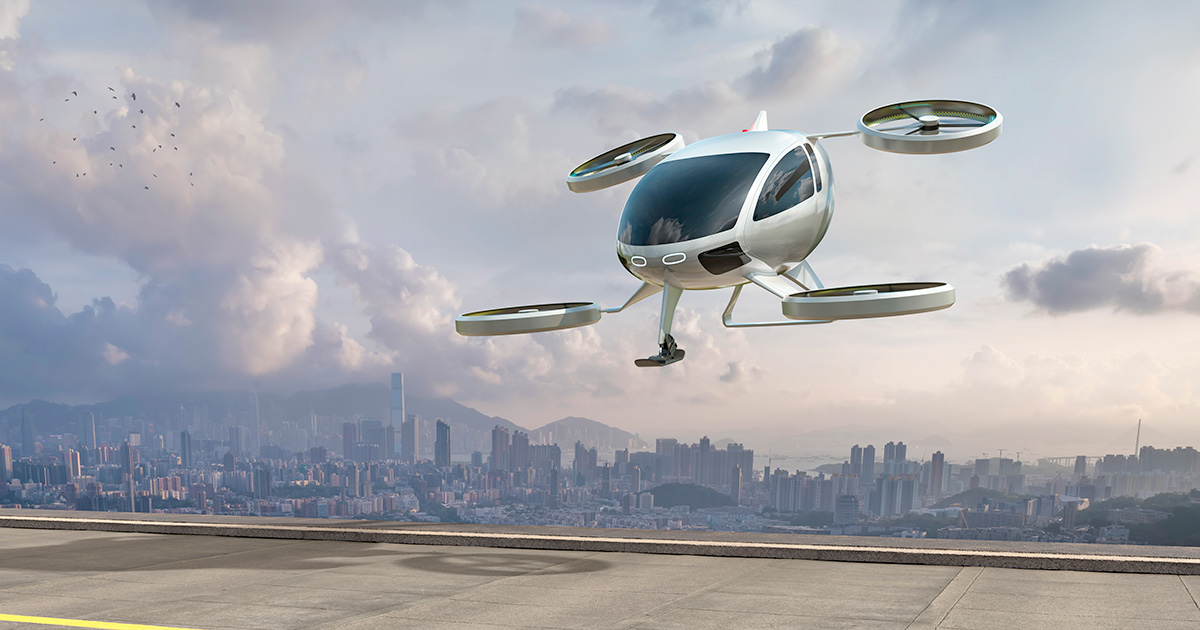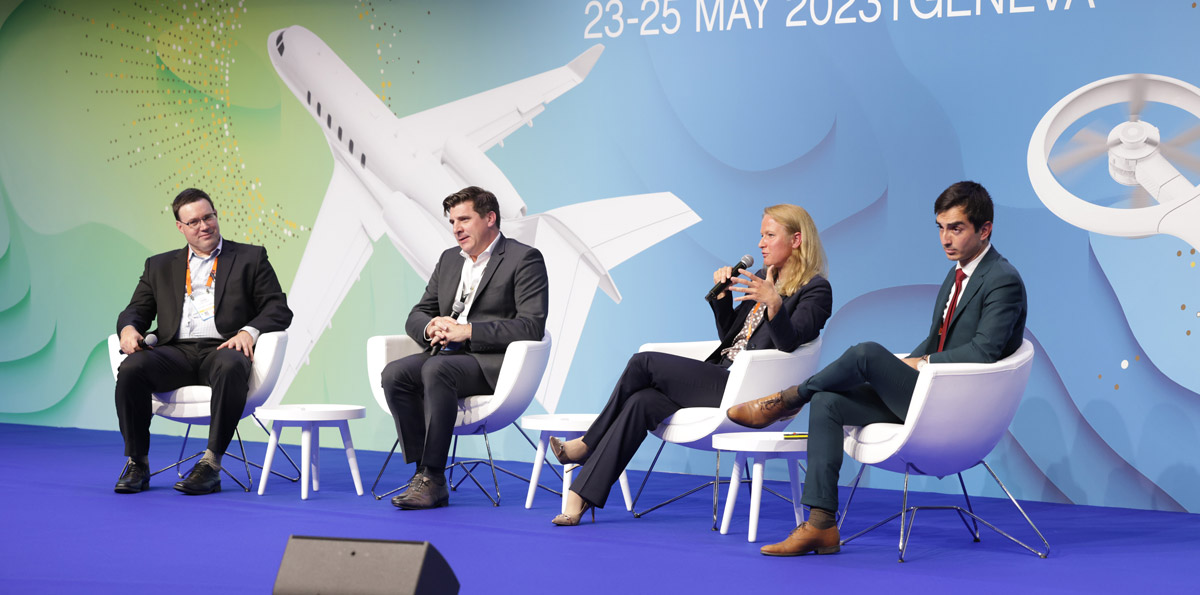EBACE2023 Panel Shares Perspectives on AAM Development

24 May 2023
With advanced air mobility (AAM) vehicles approaching reality, leaders with three AAM developers shared their perspectives Tuesday at the 2023 European Business Aviation Convention & Exhibition (EBACE2023) on their respective paths to commercial service and what hurdles remain for them, and the industry as a whole.
Thibault Baldivia, co-founder and chief customer officer for Ascendance Flight Technologies, acknowledged the challenge in balancing development of a completely new form of transportation with demanding timeframes and financial realities.
Regarding certification, “one thing we can’t do [is assume] that we will do right the very first time,” he said. “We do need to build several prototypes … to quickly understand what is working and split what is not. [But] having a development roadmap is really key to certifying, maybe not quicker, but with [fewer] custom aircraft.’
“It really comes down to being very intentional about those feedback loops and the number of iterations,” agreed Diana Siegel, chief financial officer for Electra.aero. “The number of iterations probably isn’t one, but it also shouldn’t be one hundred. That very quickly gets you into an unmanageable program.”
Ascendance and Electra have taken different routes to AAM, with the latter’s Atea hybrid-electric vertical takeoff and landing (VTOL) platform using ducted fans mounted in the lifting surfaces of a fixed wing aircraft. Electra’s hybrid ultra-short takeoff and landing (eSTOL) vehicle uses a ‘blown wing’ to enable takeoffs in as little as 300′ x 100′ of space.
By comparison, Lilium’s eVTOL jet uses 30 miniature ducted fans mounted to moving surfaces on a forward canard and main wing. Despite the vehicle’s unconventional appearance, Sebastien Borel, Lilium’s vice-president for business, said the company is minimizing development risk by using existing systems where it can.

Moderator: Robin Riedel; Panelists: Sebastien Borel, Diana Siegel, Thibault Baldivia
“We rely on our supply chain,” he said. “Many other eVTOL and AAM companies have decided to verticalize a lot of their production … Powertrain, batteries, they want to do everything on their own. We want to have the entire help of the industry.”
Other challenges discussed at the session included the regulatory environment and how quickly AAM will be available for public use. Panelists agreed that perhaps the greatest misconception about the industry is that such vehicles will “darken the skies” in the coming years.
“This will be a gradual implementation of new technology with different design and architecture,” Borel said. “It’s not like we’re expecting everything to just change from one day to another. It will be a gradual change in the ecosystem.”
“People hear about mobility and they think of ‘The Jetsons,'” Baldivia added. “While these vehicles may change our industry, we approach [Atea] as the development of a new aircraft, not a new form of mobility.”
Even at a more measured pace, Siegel said AAM will still offer new transportation options to underserved regions, or areas that have lost other forms of air service.
“When thinking of AAM, folks have in mind that it will require 20 vertiports per city and a ton of new infrastructure,” she said. “At the end of the day, I think it will be more tractable and manageable. Even four [vertiports] per town will offer a lot of value in connecting people and communities.”
The session, “Cleared for Takeoff: The Flight Plan for eVTOLs,” was part of the two-day EBACE Sustainability Summit examining new methods of sustainable propulsion and aerial transportation.


